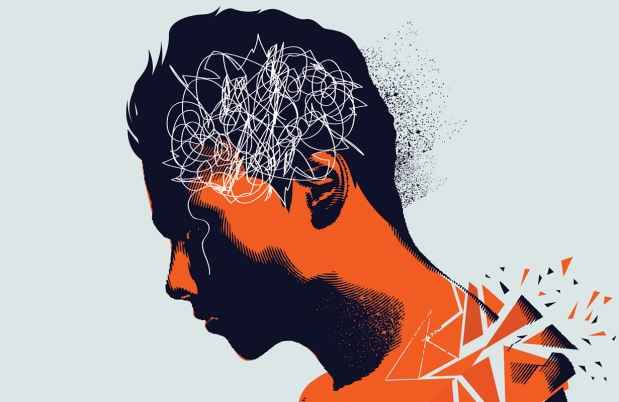Following a bout of the flu and a negative COVID-19 test, Rebecca Sanford, MSN, APRN, PCNS, returned to work at McLean’s Clinical Evaluation Center (CEC) in mid-March this year. A lot had changed at the CEC.
People were anxious. Many new policies and procedures were in place, and many others were added in the following days and weeks. Sanford said that these changes made it challenging to effectively care for patients while keeping both patients and staff safe. They were figuring out how to “physically distance and emotionally engage.”
Sanford said that health care workers are used to dealing with the aftermath of crises that take place outside of the hospital’s walls. With COVID-19, however, there was a crisis, or at least the potential for one, inside the walls. She wanted to help support her colleagues—and help them support each other—while they dealt with this new normal.
“I wanted to be someone who stepped up in some way,” she said. “At the CEC, our motto is ‘Care begins here.’ That’s true not just for patients but for each other. So I thought we were well suited to be the place where a message of hope and support could start.”
Creating Hope
Thus began the Signs of Hope Project. Sanford asked co-workers to create signs representing hope. She then took photos of her colleagues holding up these inspirational signs and used these images to create a slideshow video of support for health care workers. The only piece missing now was a soundtrack.
Sanford was originally set on using the “Glee” cast version of “Lean on Me,” but, despite great effort on her part, she was unable to secure the rights to use the song. She sifted through a lot of freely available music, but she didn’t find anything that felt right to her. She wanted music that would match the spirit and power of the images.
Despite her frustration, she kept trying to find an appropriate song. She credited her colleagues with helping to keep her going.
“None of this would have happened without the support of the people I work with,” said Sanford. “They engaged in the project and then kept encouraging me, even when I didn’t get the license for my original song choice.”
Journey of a Song
In the spirit of the project, she reached out to her friends for help. She posted a message on her Facebook page, and one of her friends put her in touch with a potential solution—Dan Navarro, a successful singer-songwriter based in Los Angeles.
Sanford explained her dilemma, and Navarro asked Sanford whether she would be interested in adapting one of his songs, “We Belong,” which he co-wrote with Eric Lowen. Pat Benatar’s rendition of this song peaked at #5 on the Billboard Hot 100 singles chart in 1985.
Navarro invited Sanford to take a first crack at rewriting the lyrics. She accepted his offer and sent him a draft. She was pleased when he described it as “an excellent first shot.”
They went back and forth a few times with edits, and, in relatively short order, they had settled on a new version of “We Belong,” calling it “We Belong to Hope.”
At one point during the process, Navarro questioned whether they should use the line “It is not a sign of weakness if you don’t know what to say.” He expressed concern about how it would reflect on Sanford’s chosen profession. Sanford was firm about keeping it in.
“We’re the people who completely embrace that it’s OK to not know what to say,” explained Sanford. “Sometimes words aren’t enough, and often the real power of the therapeutic process is being present and listening.”
“This is a frightening time for everybody. And it’s a truth that we may not individually feel hopeful at any given moment, but together we can. Because if you’re not hopeful one day, I might be, and I will share that hope with you.”– Rebecca Sanford
On her end, Sanford was having difficulty with grasping the meaning of the line “We belong to the light, we belong to the thunder,” which is in both “We Belong” and “We Belong to Hope.”
“But, as I kept hearing it, I thought that it really does fit,” she said. “You belong to the good moments, and you belong to the darker, stormier times. As a nurse, you are there with patients and bear witness to it all.”
Once they had settled upon the words, Navarro volunteered to contribute the vocals. He recorded the “We Belong to Hope” track in his home studio and tested the audio while driving around Los Angeles in his car.
Sanford said that the song’s combined message of hope and support was partly inspired by a psychiatrist who worked at McLean years ago, Paul Plasky, MD, PhD.
“He once said to a young man facing the beginning of a psychotic illness, ‘You might not have the hope. You may not feel hopeful today, but I’m going to hold on to it for you.’ And that moment has never left me. This is a frightening time for everybody. And it’s a truth that we may not individually feel hopeful at any given moment, but together we can. Because if you’re not hopeful one day, I might be, and I will share that hope with you.”

Sanford reminds us of the signs of hope
When the song was shared with the McLean community, it immediately struck a chord. Navarro also received a lot of positive feedback—in words and donations—when he played the song at a fundraiser for The ALS Association Golden West Chapter. ALS took the life of his songwriting partner, Lowen, at the age of 60 in 2004.
The song’s warm reception can be attributed to Navarro’s soulful voice and the humility in the lyrics.
“Maybe some health care workers feel like heroes,” said Sanford. “I didn’t want it to be about that. I wanted it to be more about being in it together. It’s our work, it’s what we do, and we’re here to do it together.”
Media Requests
Journalist or member of the media? We are available 24/7 for media requests.



